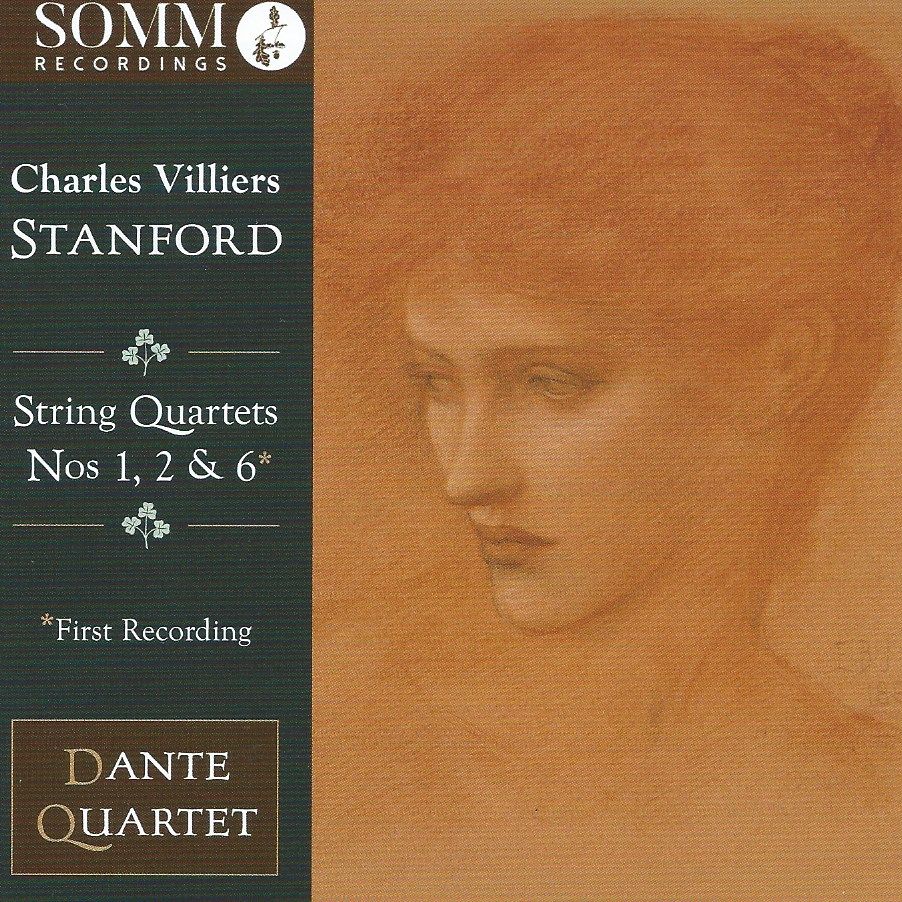Charles Villiers Stanford's String Quartets
Superb performances of music that deserves far wider currency

I imagine most people can name compositions written in Lllandudno by major composers on the fingers of one hand - if at all. Stanford's first two string quartets though, were composed on a family holiday there. The recording we're looking at here, from Somm, contains those two, plus the World Premiere recording of the Sixth.
The First Quartet has a wonderfully bright, smoothly flowing first movement; there are also some lovely flowerings of counterpoint. Stanford's admiration for Beethoven is well known, and one might detect something of the freshness of the major-key members of Beethoven's Op. 18 Quartets in Stanford's first movement:
The quietly scampering second movement nevertheless includes some glorious melodies, but it in the expansive slow movement that the Beehoven link really asserts itself, this time to the song-like cantilenas of the late quartets. Here's Stanford's Largo con molto espressione in full:
... and it's certainly true there's a gigue element to the ebullient finale - but do I detect the influence of English folksong here, too, in the trippping theme?
The Second Quartet takes us to the minor mode (A minor, Op. 45) - this is a piece that impressed the great George Bernard Shaw. The first movement seems more daring, thinning the texture to a thread. A cheeky Scherzo (lasting less than three minutes and with a great drone effect) leads to a slow movement every inch as profound as that for No. 1. It is when we get to the finale that things change, and we pack our bags and head to the other side of Europe. It is true there is a somewhat Czech demeanour to the music here:
While there is an alternative recording of the first two quartets on Hyperion's budget Helios label with the RTÉ Vanbrough Quartet (coupled with the Fantasy for Horn and Strings No. 3 with the excellent Stephen Stirling), there is no alternative for the Sixth Quartet (A minor, Op. 133). This does lead to rather a lot of the same key centre on one disc (two out of the three in A minor), but we've moved forwards to 1910 now. The work lay unpublished for some extended time, until 1980. The score here is prepared by the booklet annotator, Jeremy Dibble. There is a sort of sophisticated grittiness to the first movement that is both alluring and involving:
Jeremy Dibble is quite right to refer to the "domestic glow" of the slow movement, an Andante quasi lento with almost impossibly tender melodies; only in the tremolos of the central section do we return to the concert stage:
The Sixth is the only quartet on the disc cast in three movements - because the third movement includes elememts of both Scherzo and finale. Complex both formally and contrapuntally, it is compositionally virtuosic, a real discovery.
From Hyperion, Stanford Preludes played by Sam Haywood are a logical next step after exploring this cycle. But we aim to return to the earlier volumes in this string quartet series also ...
